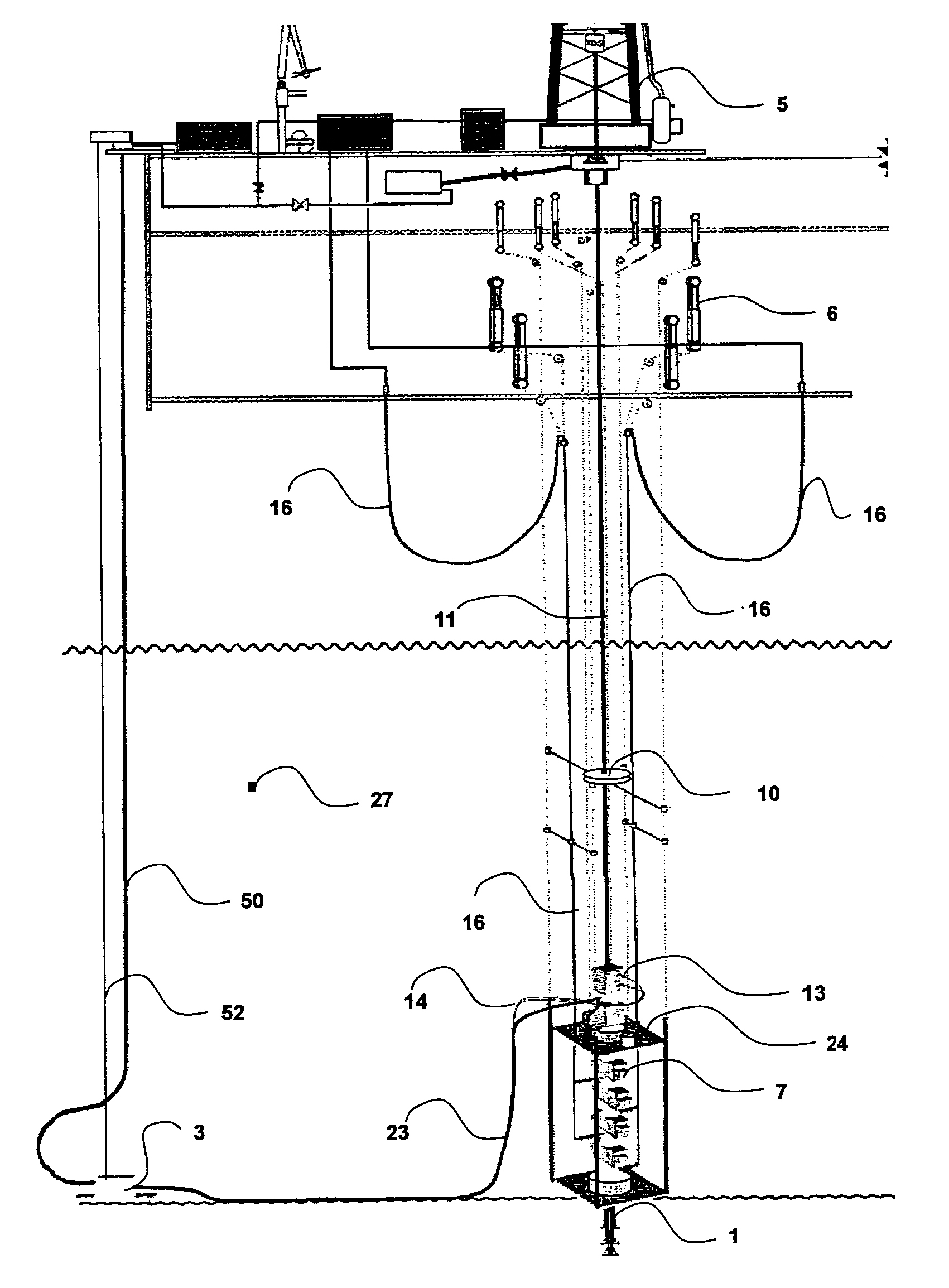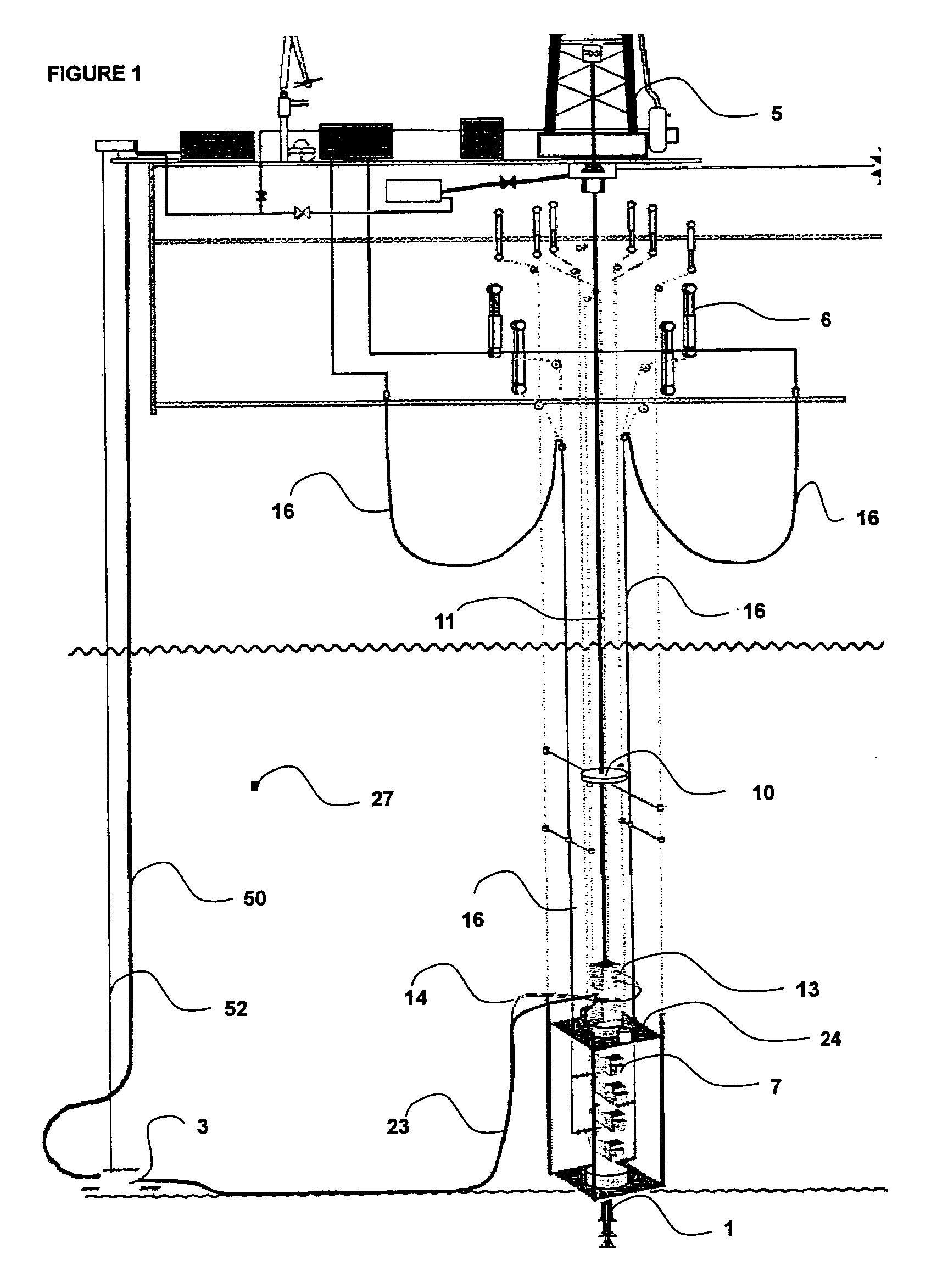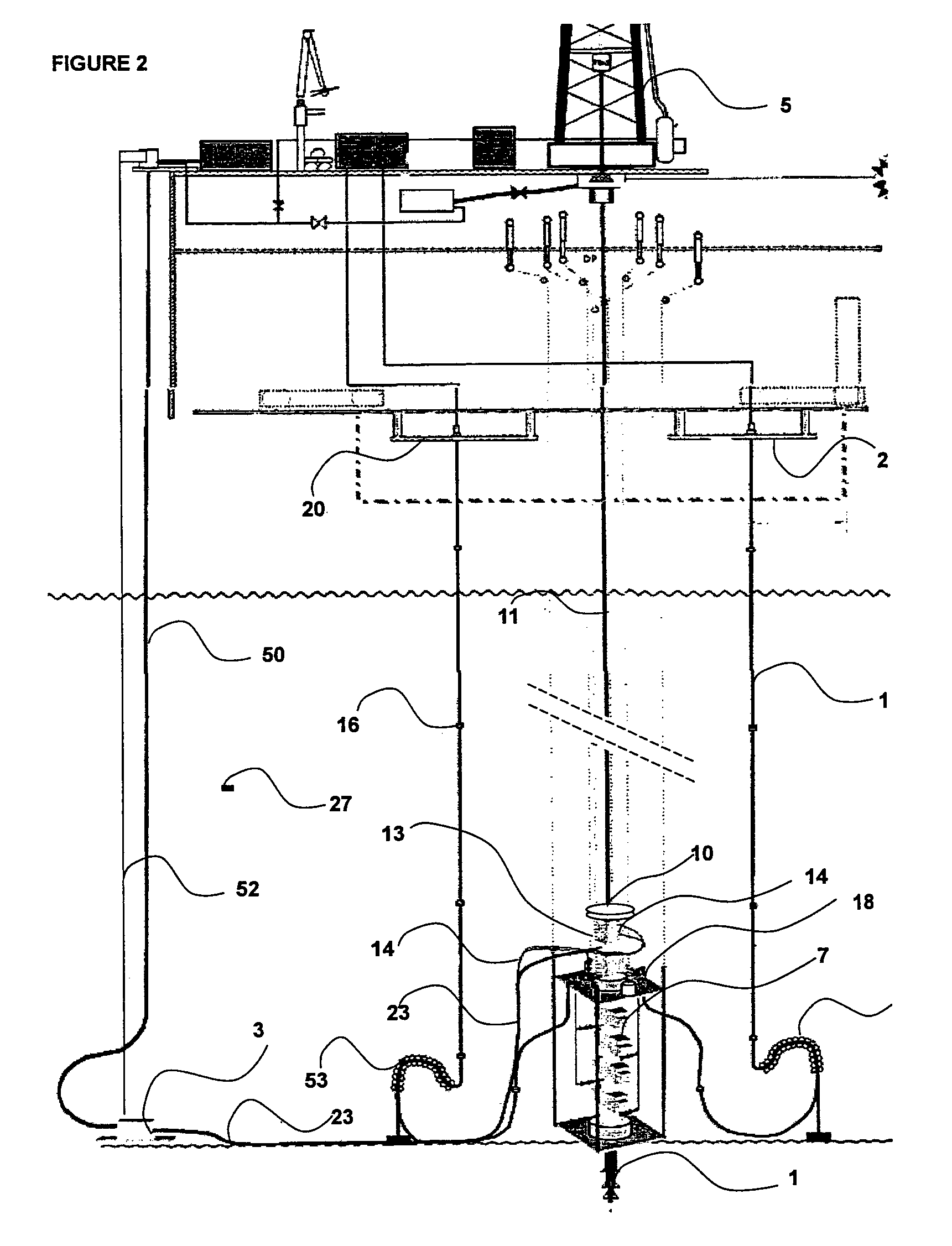Riserless, pollutionless drilling system
a drilling system and pollution-free technology, applied in the field of drilling offshore, can solve the problems of pollution of drilling fluid, no good solution, high day rate, etc., and achieve the effect of reducing the risk of heavy pollution, reducing the height and weight of the bop, and reducing the stress componen
- Summary
- Abstract
- Description
- Claims
- Application Information
AI Technical Summary
Benefits of technology
Problems solved by technology
Method used
Image
Examples
first embodiment
[0039]FIG. 1 (not to scale) shows a simplified schematic of the invention. A drilling unit MODU (5) is shown, with a drill string (11) deployed subsea and into the well being drilled in seawater (27). The drilling unit MODU (5) maintains its location over the well co-ordinates. On the subsea wellhead (1), a riserless blowout preventer stack (7) with a simplified LRMP on top is installed which provides secondary well control capability and renders physical connection to the subsea booster pump (3) package. The physical connection between the riserless blowout preventer stack (7) (LMRP) and the subsea booster pump (3) package is via flexible umbilicals.
[0040]The services required for the subsea booster pump (3) package and the riserless blowout preventer stack (7) are connected to the drilling unit MODU (5) by a vertical (possibly composite) hose bundle (52) connected between the seafloor or subsea free hanging installed subsea booster pump (3) module and the topsides MODU (5). The ve...
second embodiment
[0043]FIG. 2 (not to scale) shows a simplified schematic of the invention and uses the same sub components as the former arrangement described in FIG. 1, however in this case, the flexible choke and kill lines (16) are not top tensioned and instead, vertical displacements of the drilling unit MODU (5), under the influence of prevailing sea states, are accommodated by a ‘reverse pliant’ wave (53) formed by the over length flexible pipe in near proximity to the seafloor. The flexible choke and kill lines (16) are terminated on the lower marine riser package receiver plate (18) using gooseneck assemblies (54). The length of flexible choke and kill lines (16) can be built and pre-installed prior to the commencement of a drilling campaign and thereafter remain in-situ. The sections of flexible choke and kill line (16) will be assembled individually and the increasing built length hung on supplementary basement decks (20). Such a hang-off and storage amenity will be fully used whenever th...
PUM
 Login to View More
Login to View More Abstract
Description
Claims
Application Information
 Login to View More
Login to View More - R&D
- Intellectual Property
- Life Sciences
- Materials
- Tech Scout
- Unparalleled Data Quality
- Higher Quality Content
- 60% Fewer Hallucinations
Browse by: Latest US Patents, China's latest patents, Technical Efficacy Thesaurus, Application Domain, Technology Topic, Popular Technical Reports.
© 2025 PatSnap. All rights reserved.Legal|Privacy policy|Modern Slavery Act Transparency Statement|Sitemap|About US| Contact US: help@patsnap.com



